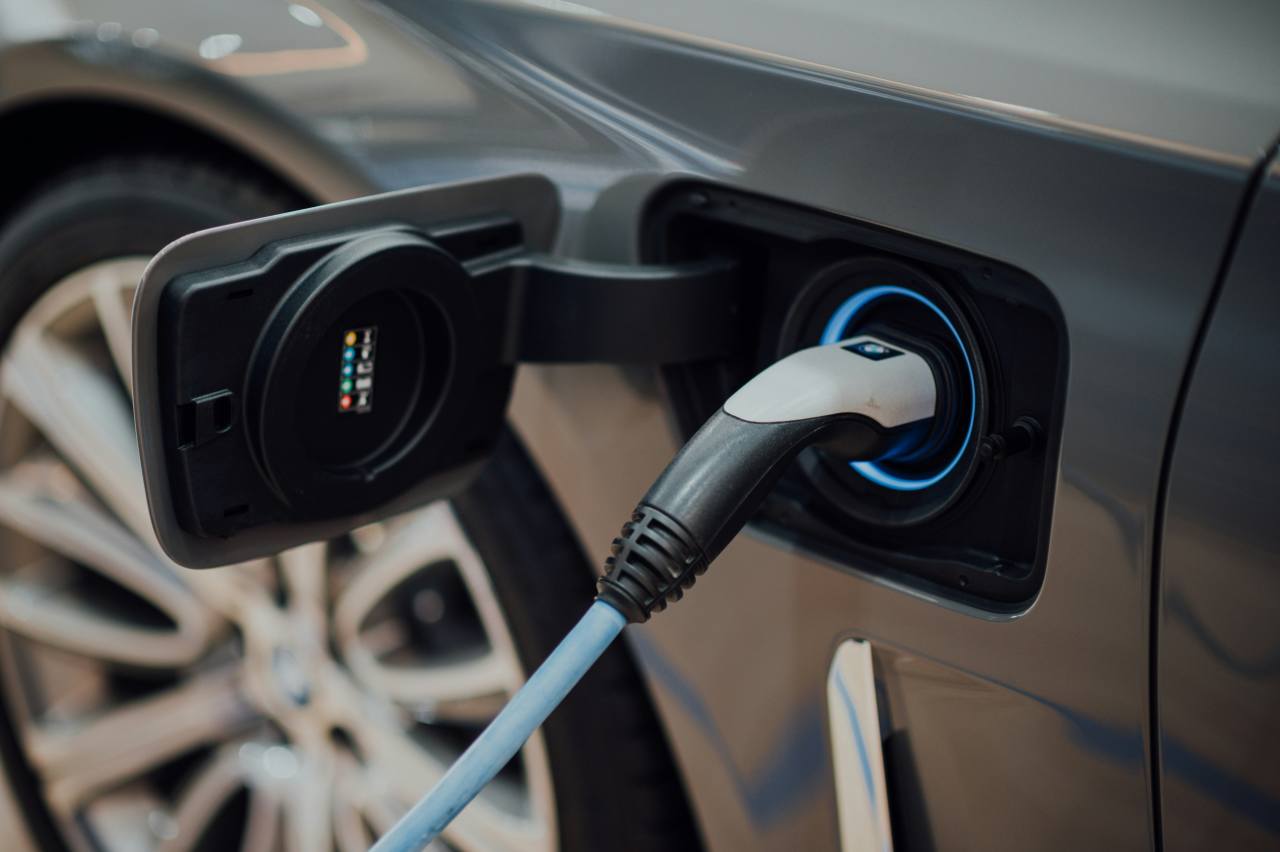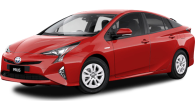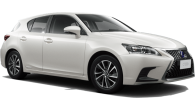Hats off to Hyundai Australia for offering a mainstream model covering the gamete of petrol-electric hybrid and full zero (tailpipe) emissions powertrain options. Power walking the walk while other new car brands are still just talking the EV talk.
The Ioniq, a mid-size, five-seat, five-door hatch arrived here in late 2018, in three configurations – Hybrid, Plug-in Hybrid, and Electric.
Then, because Australia was late to the Ioniq party, what felt like five minutes later (actually 12 months) a new and improved version took its place.
With revised design inside and out, upgraded tech, and a bigger battery, this Electric model is pricier, but even at around $50K remains at the affordable end of the expanding EV market.
So, still not cheap, but within the bounds of possibility for a family willing and able to pay extra to reduce its carbon footprint and leave fossil fuels behind.
We spent a week in the top-spec Premium model to experience electric mobility Hyundai Ioniq style.
Hyundai Ioniq 2020: Electric Premium
| Engine Type | 0.0L |
|---|---|
| Fuel Type | Electric |
| Fuel Efficiency | 0.0L/100km (combined) |
| Seating | 5 |
| Price From | $30,250 - $36,410 |
| Safety Rating |
|
Is there anything interesting about its design?
The updated Ioniq has been given a visual tszuj, but key external dimensions are unchanged. The sloping, fastback profile is the same, the nose now sporting a satin grey grille insert with active shutters either side of the centre logo. The aim is to provide extra cooling to the motor when required, maintaining the best possible aero profile at other times.
.JPG)
LED daytime running lights are integrated into angular nose vents designed to create a wind-cheating ‘air curtain’ around the front wheels, and the 16-inch alloy rims have been “aerodynamically sculpted” to further optimise the car’s aerodynamics.
Combination LED tail-lights add some extra drama at the rear, with the bumper now featuring a matt grey insert to match the nose treatment.
Inside, the dashboard is all new with a 10.25-inch tablet-style media screen taking centre stage. The climate control set-up has also been refreshed (with capacitive touch controls replacing buttons), sleek piano black finishes neatly integrating the two areas, and the Premium grade’s ‘leather-appointed’ seats look quality and feel good.
.JPG)
In terms of other materials used, there are sugar-cane bi-products (25 per cent of the raw materials used in the soft-touch door trim panels), and recycled plastic, powdered wood and volcanic stone (10 per cent of plastics on other interior surfaces). Bio-fabrics (20 per cent sugar-cane bi-products) are used in the headliner and carpet.
An interesting design tweak under the hood is the styling effort applied to the electric motor to make it look more like a conventional engine. The motor’s relatively small size is neatly camouflaged by a carefully chiselled and profiled plastic shroud placed over the top of it to cover the empty spaces below and give the impression of a longitudinally installed engine.
How practical is the space inside?
At just under 4.5m long, a fraction over 1.8m wide, and 1.45m high the Ioniq is in the same dimensional ballpark as volume-selling small hatches like the Kia Cerato, Mazda3, and Toyota Corolla.
There’s plenty of room up front with storage options including a surprisingly generous glove box, and a decent centre armrest/storage box with a USB-A power outlet lurking inside. Lengthy pockets in the doors incorporate a large recessed bottle section.
.JPG)
Dual cupholders sit next to the gearshift with a Qi wireless charging bay ahead of them, while a loose items tray in front of that features two 12-volt sockets and a USB-A connection/charging port to access standard Apple CarPlay and Android Auto connectivity. There’s also a retractable sunglass compartment in the overhead console.
Those in the back aren’t forgotten with a fold-down centre armrest incorporating a pair of cupholders, a map pocket on the back of the front passenger seat (only), and smaller door pockets will accommodate smaller bottles.
.JPG)
Adjustable air vents at the back of the front centre console are always welcome, but not so thrilling is the swoopy turret’s impact on rear headroom.
Sitting behind the driver’s seat set for my 183cm height I enjoyed adequate legroom, but in a normal position my noggin was in solid contact with the headliner; an issue exacerbated by the standard tilt and slide glass sunroof’s 25mm downward intrusion.
.JPG)
With the 60/40 split-folding rear seat upright cargo volume is 357 litres (VDA) to the top of the seats, and 462 litres to the roof. Although that’s around 20 per cent less than the Ioniq Hybrid, it’s still not too shabby, and enough to swallow our three-piece hard suitcase set (35, 68 and 105 litres), or the jumbo size CarsGuide pram. Once you’ve dropped the back seat, space opens up to a substantial 1417 litres.
.JPG)
Four tie-down hooks and a luggage net are included, and there’s a handy recess behind the driver’s side wheel tub.
Don’t bother looking for a spare of any description, a repair and inflate ‘tyre mobility kit’ is your only option, and forget about hooking up the boat or van, the Ioniq is a no-tow zone.

Does it represent good value for the price? What features does it come with?
A recommended retail price of $52,490 is lots for a small hatchback in this market. To put that number in perspective a top-spec Mazda3 G25 GT Astina auto hatch is $38,040, and the flagship Toyota Corolla ZR Hybrid, complete with two-tone paint option is $34,085.
That said, Nissan’s zero emissions Leaf hatch sits at $49,990, the diminutive Renault Zoe hatch is $49,490, and the Tesla Model 3 starts at $67,000, running all the way up to $85,900. Even Hyundai’s own Kona Electric compact SUV lists at $59,990 for the Elite, and no less than $64,490 for the top-shelf Highlander.
So, the ‘normal’ take on value-for-money doesn’t sit at the core of the Ioniq Electric proposition, unless the value you’re looking for is environmental superpowers.
.jpg)
But the Ioniq Electric Premium grade doesn’t skimp on standard features, the equipment list including, alloy wheels, smart cruise control (with stop/go), rain-sensing wipers, keyless entry and start, the 10.25-inch media touchscreen managing an eight-speaker Infinity audio system (with external amplifier, digital radio, Apple CarPlay and Android Auto, Bluetooth device connectivity, and sat nav with live traffic updates), climate control, heated and ventilated front seats, leather-appointed steering wheel (heated) and seats (driver’s 10-way power-adjustable with memory), a tilt and slide glass sunroof, 7.0-inch digital colour instrument display, alloy pedal covers, LED headlights (auto), DRLs and tail-lights, dashboard ambient lighting, and reversing camera (with parking guidance).
.JPG)
Add in the substantial suite of standard active and passive safety tech (covered in the Safety section), and the big price gap to similarly sized, conventionally-powered hatches may just be one you’re willing to stretch across.
What are the key stats for the engine and transmission?
This Ioniq gives the internal combustion engine the flick, with a 100kW/295Nm permanent-magnet AC synchronous electric motor residing under its bonnet.
An AC synchronous motor features a rotor producing a constant magnetic field, with a stator outside it generating a revolving magnetic field. The stator is ‘excited’ by an AC current supply, which produces a revolving magnetic field rotating at synchronous speed. Got it?
.JPG)
Management of the frequency of the electrical current means the speed of the motor can be accurately controlled, with the parallel benefit of synchronous motors producing constant speed irrespective of load.
Drive goes to the front wheels via a single-speed reduction gear auto transmission.
How much fuel does it consume?
Rather than litres per 100km (L/100km) it’s likely we’ll all become increasingly familiar with alternate measures of a vehicle’s energy efficiency, and it feels like it’s taking a while for the world to agree on a standard measure.
According to the Australian standard combined (ADR 81/02 - urban, extra-urban) cycle, the Ioniq Electric uses 117 watt hours per kilometre (Wh/km).
Which you’ll also see expressed as 15.7 kilowatt hours per 100km (kWh/100km) and 6.4 km per kilowatt hour (km/kWh). Get it together, people!
.jpg)
Anyway, over around 200km of city, suburban, and highway running we saw a dash-indicated average of 8.0km/kWh. Go crazy if you’d like to convert it to another format.
Quoted range is 373km according to the Australian standard, and 311km in line with the European WLTP (Worldwide Harmonised Light Vehicle Test Procedure) protocol, the latter widely regarded as more ‘real world’ accurate.
The battery is a 38.3kW Lithium-ion Polymer unit with a charging capacity of 100kW when using a DC fast charger. Enough to deliver an 80 percent charge in 57 minutes using a 50kW charger, and 54 minutes when connected to a full-fat 100kW charger.
Plug into a 240-volt AC socket and you’re looking at around six hours for a full charge. A perfect opportunity to use overnight, off-peak energy.
What's it like to drive around town?
Like all Hyundai’s sold in Australia, the Ioniq’s suspension (MacPherson strut front / torsion beam rear) has been tuned for local conditions, and the Electric Premium rides beautifully. The seats are comfy and the car is quiet… not just because an electric motor provides the propulsion.
Despite this small car’s chunky 1575kg kerb weight it feels well buttoned down, soaking up small bumps and even bigger surface imperfections with ease.
.JPG)
The electrically-assisted steering points nicely with reasonable road feel, but we are not in sports car territory here. The overall driving experience is vanilla, with the only hint of exotic flavour following a press of the ‘Sport’ button.
Four drive modes - Normal, Eco, Eco+, Sport – are offered. Normal is just that, Eco is less than that, and emotionally, you’ve really got to be in full planet-saving mode to put up with the new Eco+ setting.
It optimises range by setting a 90km/h speed limit, switching off the air con, heating and fans, dialing the regenerative braking up to maximum, and sucking out your will to live.
The paddle shifters are entertaining, though. In everything but Sport mode they progressively increase (left paddle) or release (right paddle) the level of regen braking applied.
.jpg)
Challenge yourself to a game of ‘How little can I use the brake pedal’ for hours of fun. Pull and hold the left paddle to stop altogether without touching the brake pedal.
Switch to Sport and the same paddles control the transmission, using pre-set steps to mimic individual gear ratios.
All 295Nm of torque is available from step-off and if you experience a rush of blood and pin the throttle expect 0-100km/h to come up in around 10.0sec. The most urgent thrust is up to around 50km/h, acceleration softening off a bit from there.
If the regen braking game becomes tedious, the conventional stoppers are vented 280mm disc at the front and solid 284mm discs on the rear, which is the same as the Hybrid and Plug-in hybrid variants.
Warranty & Safety Rating
What safety equipment is fitted? What safety rating?
The Hyundai Ioniq picked up a maximum five-star ANCAP rating when it was assessed in October, 2018, and the Electric Premium is equipped with an impressive array of active and passive safety tech, with ‘expected’ crash prevention features such as ABS, brake assist, EBD, as well as traction and stability controls present and accounted for.
On top of that, this top-spec model is fitted with ‘Hill-start Assist Control’, ‘Blind-Spot Collision Warning’, ‘Driver Attention Warning’, ‘Forward Collision-Avoidance Assist’ (city/urban/interurban/pedestrian) which is Hyundai-speak for AEB, ‘High Beam Assist’, ‘Lane Following Assist’, ‘Lane Keeping Assist – Line’, ‘Rear Cross-Traffic Collision Warning’ and ‘Smart Cruise Control with Stop & Go.’
But wait, there’s more, including ‘Emergency Stop Signal’, ‘Parking Distance Warning’ (front and rear with four sensors at each end and a guidance display), ‘Rear View Monitor with Parking Guidance’, and a tyre pressure monitoring system.’
If, despite all of the above, a crash is unavoidable the passive safety roster includes seven airbags (driver and front passenger head and thorax bags, driver’s knee, and side curtain airbags covering both rows of seats).
There are three top tether points for securing baby capsules/child restraints across the rear seat, with ISOFIX anchors on the two rear outboard positions.
What does it cost to own? What warranty is offered?
Hyundai’s ‘iCare’ ownership program kicks off with a five-year/unlimited km warranty, with 12 months roadside assist and a (complimentary) 1500km first service included.
_0.JPG)
The Ioniq battery warranty extends for eight years/160,000km. There’s also a dedicated Hyundai Customer Care Centre, and the 'myHyundai' owner website.
A ‘Lifetime Service Plan’ is available with recommended service intervals set at 12 months/15,000km. Service cost for the first five years for the Electric is $160 each and every year.
Continue to service the car with an authorised Hyundai dealer and you’ll receive a 10-year sat nav update plan and a roadside support plan for up to 10 years.
Verdict
In the Ioniq Electric Premium, Hyundai has put together an impressive small hatch EV. Expensive by conventional standards, it’s one of the more affordable electric vehicles on the market. Comfortable, quick, well equipped, and practical it’s bringing zero tailpipe emissions closer to the masses.



.JPG)

































.jpg)
.jpg)

.jpg)
.jpg)

.jpg)




.jpg)
Comments